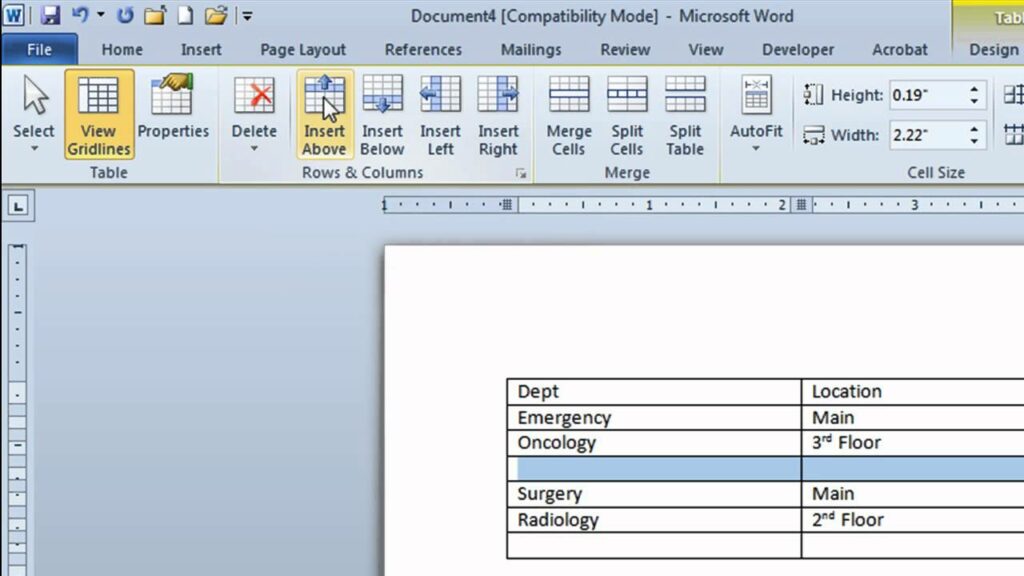Mastering Table Editing: A Comprehensive Guide to Editing Tables in Word XP

Tables are indispensable tools for organizing and presenting information in documents. Microsoft Word XP, also known as Word 2002, offers a variety of features for editing tables to suit the specific needs of users. In this extensive guide, we’ll delve into the intricacies of editing tables in Word XP, providing you with the knowledge and techniques to manipulate, modify, and refine tables with ease.
Understanding Table Editing:
Table editing encompasses a wide range of tasks, including adding and deleting rows and columns, resizing cells, merging and splitting cells, adjusting table properties, and more. Effective table editing techniques allow users to customize tables to fit the content and layout requirements of their documents seamlessly.
1. Adding and Deleting Rows and Columns:
Adding Rows:
Word XP provides users with several methods for adding rows to tables. To add a row:
- Place your cursor in the row above or below where you want to add the new row.
- Click on the “Table” menu.
- Select “Insert” and choose “Rows Above” or “Rows Below” from the dropdown menu.
Deleting Rows:
To delete a row:
- Place your cursor in any cell within the row you want to delete.
- Click on the “Table” menu.
- Select “Delete” and choose “Rows” from the dropdown menu.
Adding Columns:
To add a column:
- Place your cursor in the column to the left or right of where you want to add the new column.
- Click on the “Table” menu.
- Select “Insert” and choose “Columns to the Left” or “Columns to the Right” from the dropdown menu.
Deleting Columns:
To delete a column:
- Place your cursor in any cell within the column you want to delete.
- Click on the “Table” menu.
- Select “Delete” and choose “Columns” from the dropdown menu.
2. Resizing Cells and Adjusting Table Properties:
Resizing Cells:
Word XP allows users to resize individual cells within tables to accommodate different amounts of content. Users can click and drag the borders of cells to adjust their size manually, or use the Table Properties dialog box to specify precise dimensions.
Adjusting Table Properties:
Users can modify various properties of tables, including borders, shading, alignment, and size. The Table Properties dialog box provides options for customizing the appearance and layout of tables, allowing users to create visually appealing designs.
3. Merging and Splitting Cells:
Merging Cells:
Users can merge multiple cells together to create larger cells within tables. This feature is useful for creating header rows or spanning content across multiple columns.
Splitting Cells:
Conversely, users can split cells to divide them into smaller units. Word XP provides options for splitting cells horizontally or vertically, allowing users to adjust the structure of tables as needed.
4. Advanced Table Editing Features:
Formulas and Calculations:
Word XP supports basic mathematical operations within tables, allowing users to perform calculations using formulas and functions. Users can create dynamic and interactive tables with built-in formulas for addition, subtraction, multiplication, and division.
Sorting and Filtering:
Users can sort and filter table data to organize information in a meaningful way. Word XP offers options for sorting data alphabetically or numerically, and applying filters to display specific rows based on criteria.
Conclusion:
Editing tables in Word XP offers users a powerful way to manipulate, modify, and refine tables to meet the specific requirements of their documents. Whether you’re adding or deleting rows and columns, resizing cells, merging and splitting cells, or adjusting table properties, mastering table editing techniques allows for seamless customization and refinement of tables in Word XP. By leveraging the features and techniques outlined in this guide, users can effectively edit tables and create professional-looking documents with ease.




